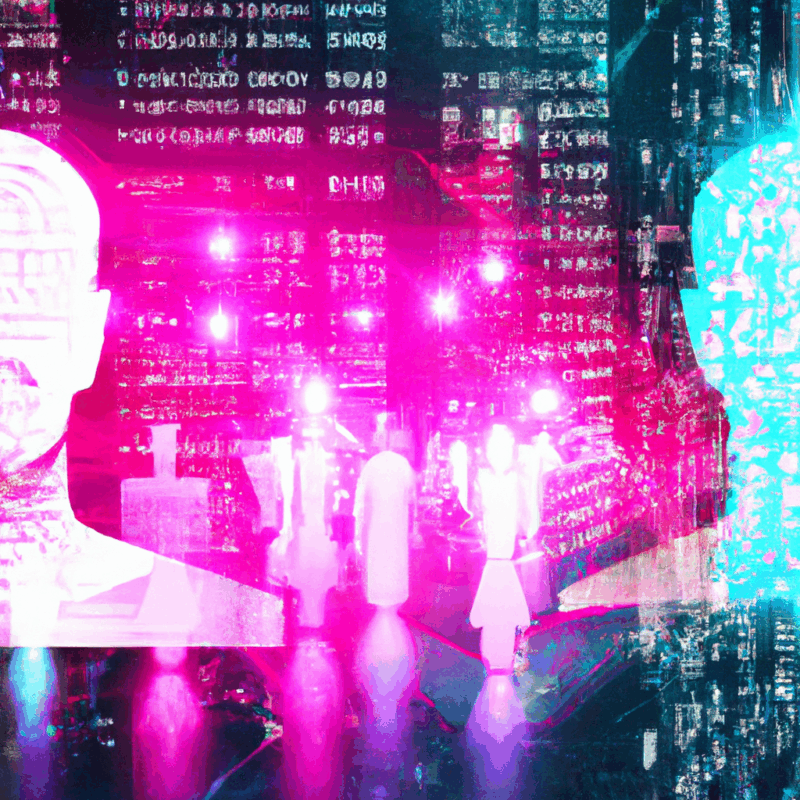Business
“Top 10 Proven Utilizing Algorithms for Amazing Results”
Title: “Top 10 Proven Utilizing Algorithms for Amazing Results”
In today’s digital age, utilizing algorithms has become a key strategy for businesses looking to personalize marketing campaigns and target specific customer segments. By harnessing the power of AI algorithms, companies can analyze vast amounts of data to understand customer behavior, preferences, and trends, allowing them to create highly targeted and effective marketing campaigns. In this blog post, we will explore the top 10 proven algorithms that can help businesses achieve amazing results in their marketing efforts.
### Understanding Customer Segmentation
Before delving into the specific algorithms, it’s crucial to understand the concept of customer segmentation. Customer segmentation involves dividing a company’s customer base into distinct groups based on shared characteristics such as demographics, behavior, or preferences. By segmenting customers, businesses can tailor their marketing strategies to better meet the needs and interests of each group, ultimately leading to higher engagement and conversion rates.
### 1. Collaborative Filtering
Collaborative filtering is a popular algorithm used in recommendation systems to predict a customer’s preferences based on the preferences of similar customers. By analyzing past behavior and interactions, businesses can recommend products or services that are likely to appeal to individual customers, leading to increased sales and customer satisfaction.
### 2. Content-Based Filtering
Content-based filtering is another powerful algorithm that recommends products or services based on the attributes of the items themselves. By analyzing the characteristics of products or services that a customer has interacted with in the past, businesses can recommend similar items that align with the customer’s preferences, leading to a more personalized shopping experience.
### 3. Clustering
Clustering is a machine learning algorithm that groups similar customers together based on shared characteristics. By clustering customers into distinct segments, businesses can target each group with tailored marketing campaigns that address their specific needs and preferences, leading to higher engagement and conversion rates.
### 4. Decision Trees
Decision trees are a popular algorithm used in marketing to classify customers based on a set of predefined rules. By analyzing customer data and behavior, businesses can create decision trees that help them understand which marketing strategies are most effective for different customer segments, allowing them to optimize their campaigns for better results.
### 5. Neural Networks
Neural networks are a complex algorithm inspired by the human brain that can analyze large amounts of data to uncover patterns and trends. By using neural networks, businesses can gain valuable insights into customer behavior and preferences, allowing them to create highly targeted marketing campaigns that resonate with their audience.
### 6. Association Rules
Association rules are algorithms that identify relationships between different items or products based on customer interactions. By analyzing these relationships, businesses can create cross-selling or upselling opportunities that encourage customers to purchase related items, leading to increased sales and revenue.
### 7. K-Means Clustering
K-means clustering is a machine learning algorithm that groups customers into distinct clusters based on similarities in their behavior or preferences. By using K-means clustering, businesses can target each cluster with personalized marketing campaigns that are more likely to resonate with their audience, leading to higher engagement and conversion rates.
### 8. Support Vector Machines
Support Vector Machines (SVMs) are a powerful algorithm used in marketing to classify customers into different segments based on their behavior or preferences. By using SVMs, businesses can create predictive models that help them understand which marketing strategies are most effective for each customer segment, allowing them to optimize their campaigns for better results.
### 9. Random Forest
Random Forest is an ensemble learning algorithm that combines multiple decision trees to improve the accuracy of predictive models. By using Random Forest, businesses can create sophisticated marketing models that accurately predict customer behavior and preferences, helping them optimize their campaigns for maximum impact.
### 10. Genetic Algorithms
Genetic algorithms are a type of optimization algorithm inspired by the process of natural selection. By using genetic algorithms, businesses can optimize their marketing campaigns by evolving and adapting strategies over time based on customer feedback and performance data, leading to continuous improvement and better results.
In conclusion, utilizing algorithms is a powerful strategy for businesses looking to personalize marketing campaigns and target specific customer segments. By leveraging the top 10 proven algorithms mentioned in this blog post, businesses can achieve amazing results in their marketing efforts, driving higher engagement, conversion rates, and revenue. Whether you’re a small startup or a large corporation, implementing these algorithms can help you stay ahead of the competition and build stronger relationships with your customers.
Remember, the key to success lies in understanding your customers’ needs and preferences, and using algorithms to create personalized marketing campaigns that resonate with your audience. By harnessing the power of AI algorithms, you can unlock new opportunities for growth and success in today’s competitive marketplace.

